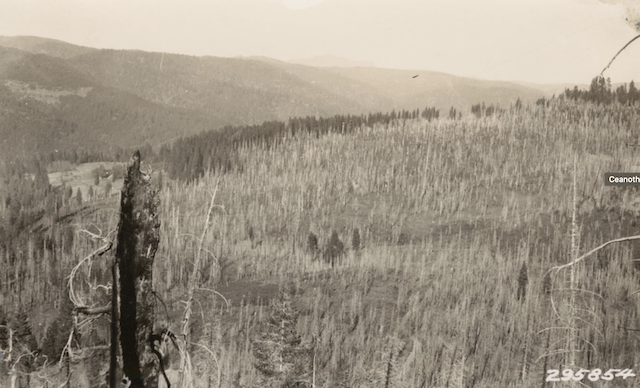Landmark Study: Faulty Science Used to Justify Logging Projects in Los Padres and Other National Forests
An unprecedented study was published last week in the peer-reviewed journal Fire, exposing a broad pattern of scientific misrepresentations and omissions that have resulted in a “falsification of the scientific record” in recent forest and wildfire studies typically funded or authored by the U.S. Forest Service. This falsified record has had profound implications for how public lands have been managed in recent decades, serving as a faulty scientific foundation for justifying large commercial logging and habitat clearance projects throughout the Western United States, including in the Los Padres National Forest.

The new landmark publication—authored by four top independent fire scientists in the country—focuses on a series of studies used by the Forest Service to craft the popular but misleading narrative that forest lands were historically sparsely vegetated. The theory maintains that modern fire-suppression practices have resulted in a “back-log” of vegetation that is fueling major fires throughout the western United States. This narrative, commonly accepted at face-value, is regularly relied on to justify commercial logging projects on public lands.
In 2022, the Forest Service relied on this falsified record when it announced a project to remove large trees and clear wildlife habitat using heavy equipment across 235,000 acres of the Los Padres National Forest. The proposal, controversially named the Ecological Restoration Project, represents the largest industrial-scale land manipulation in our region, and has received massive opposition from scientists, environmental groups, elected officials, and the general public.
The Pine Mountain Project, a similar logging proposal that received nearly 16,000 letters of opposition from the public, is also based on the misguided theory that commercial logging is essential to keep forests healthy and protect communities from fire.
“The forest management policies being driven by this falsified scientific narrative are often making wildfires spread faster and more intensely toward communities, rather than helping communities become fire-safe,” said Dr. Chad Hanson, research ecologist with the John Muir Project and co-author of the new study. “We need thinning of small trees adjacent to homes, not backcountry management.”
According to the study, a large body of modern research indicates that many commercial logging projects on public lands are based on faulty assumptions and outdated methodology, and that modern “forest thinning” projects—like the “Ecological Restoration Project,” the Pine Mountain Project, and similar proposals in the Los Padres—are not only environmentally damaging, but may be making communities more vulnerable to wildfire at a monumental expense to taxpayers. Studies conducted by Forest Service scientists or funded by the agency have repeatedly included serious flaws while also omitting data and other research that conflicts with their model of what western forests looked like prior to fire suppression, according to the new paper.
“This is perhaps the most comprehensive paper that has been published on the subject of historical fire activity and forest structure in the western United States,” said Baker. “It calls into serious question the narrative that the Forest Service and other agencies have been relying on to justify damaging management activities like logging and clearing of wildlife habitat.”







Comments are closed.